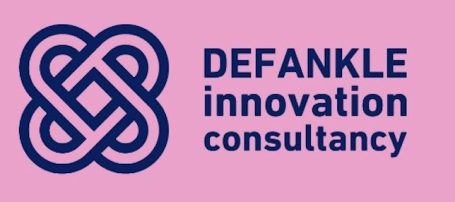
Send in the clowns – lessons in real disruption
For a few years all we heard was a tsunami of businesses, services and leaders describing themselves as ‘disruptive’. The reality, of course, was often little more than a very slight variation on a familiar theme (and sometimes not even that).
I’ve written before that innovation doesn’t need to be about huge, earth-shattering change. It’s perfectly possible, and often more realistic, to innovate quietly and moves things forward without really registering on the disrupt-o-meter so favoured by tech bros and LinkedIn ‘10X’ gurus.
I feel like the volume (by number and decibels) of ‘disruptors’ has tailed off recently. It’s become a bit passé, perhaps. I suppose AI experts have become the new disruptors.
But while the word may have become so overused as to be meaningless, the idea of disrupting a market or sector can still be hugely powerful.
One of the major benefits of innovation is your ability to differentiate your brand, product or offering in the marketplace. If you can provide your market with something no-one else can, you’re in a great position to create exponential value. Until everyone else catches up with you, of course.
But some innovation is so disruptive, so unique, that it’s almost impossible for anyone to replicate it with any degree of credibility.
One of my favourite examples of this is Cirque du Soleil.
If you’ve ever been to a traditional, big top circus – or even if you haven’t – you’ll be familiar with the format. A chap called a ringmaster, sporting a top hat, red coat tails and a big moustache hams it up in the middle of the floor, introducing a roll call of acts the eager crowd has paid their hard-earned to see: clowns with squirty lapel flowers and exploding cars; acrobats performing breathtaking feats of midair derring-do; strongmen lifting seemingly impossible weights; elephants flying around the tent, borne aloft on unnaturally long ears. Wait, that last one might have been a movie.
In any event, we all know the script with the traditional circus. And there’s nothing very wrong with that. You pays your money you makes your choice. If what you expect is what you get, then everyone goes home happy.
The circus industry wasn’t really all that different to most other established sectors. There were a few large industry leaders who stood head and shoulders above the others in terms of size, scale and income. There was then a longer tail of smaller competitors running circuses at smaller venues in front of smaller audiences paying a bit less for tickets.
So how to create a disruptive new business in a category where there’s been 100 years of established norms?
Do something completely different.
Cirque du Soleil was completely different. Their performances were themed around stories told not by a ringmaster, but via the performances. The intended audience wasn’t really ladies and gentlemen, boys and girls – it was really aimed at adults, priced accordingly, but with jaw-dropping, heart-stopping feats of acrobatics and athleticism. Very quickly, it was clear this was a circus like nothing we’d ever seen before.
Not only did Cirque du Soleil performers wear extravagant, ornate costumes, but they performed on elaborate stages with mega production featuring incredible light, sound and immersive set builds.
This huge, disruptive circus still amazes audiences all around the world as a premium entertainment experience for which people willingly pay top dollar. It’s an absolute machine of an organisation which bears very little resemblance to the circus industry which it completely transcended.
Like a lot of companies, Cirque had a spectacular and sudden decline when COVID hit. Live performances, unsurprisingly, were particularly badly affected. The business went from revenues of $1 billion to zero overnight, and filed in the US for bankruptcy protection.
As part of its fightback, it’s gone back to its roots, focusing on creative surprises and outstanding live performance. Its previous private equity owner pushed for relentless growth, the consequences of which appear to have contributed to the astonishing speed of its collapse.
But if Cirque’s downfall was rapid, its re-emergence has been almost as remarkable. It’s reportedly recovered to pre-COVID levels of revenue, and it’s prioritising creativity and innovation. And it’s Cirque du Soleil, after all. There’s a track record and brand which has undoubtedly – with the correct strategic moves – accelerated its return to something resembling its glory days.
At the heart of it all is Cirque’s spirit of disruption. Ultimately, yes, it’s a circus. But it’s a circus in a category of one. It had the confidence, foresight and appetite to create a version of entertainment that no-one had ever seen before. It’s why, when the Cirque du Soleil rolls into town, you might be better off trying to buy Oasis tickets.
If you’re not an acrobat or contortionist, the opportunity for disruption is still open to you. The ingredients are all there. The chances are you operate in a market where most companies are scrapping over the same land. It’s just as likely there are some ungrazed pastures where no-one has thought to look.
If you can find them, you might end up creating a circus all of your own.
I’d love to hear your examples of disruptive innovation. Let me know your favourites in the comments.
We need your consent to load the translations
We use a third-party service to translate the website content that may collect data about your activity. Please review the details in the privacy policy and accept the service to view the translations.
